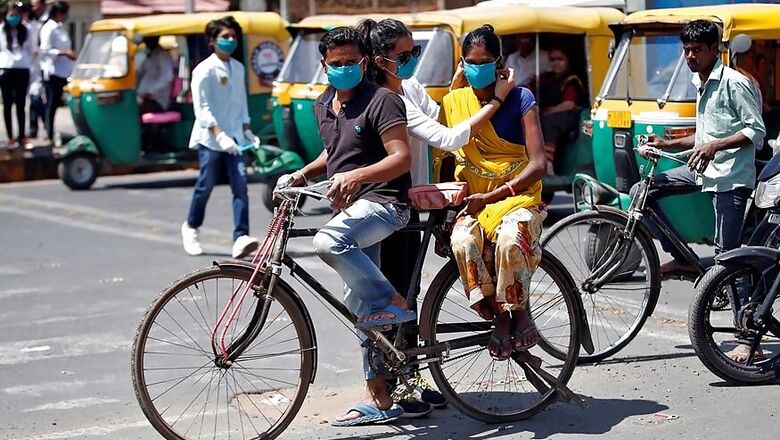
views
While announcing the INR 2 trillion stimulus in his address to the nation on May 12, Prime Minister Narendra Modi urged citizens to make use of the opportunity provided by the COVID-19 pandemic to attract investments and manufacturing jobs. Given that cities will likely be the predominant focus of these investments when they come, there is an urgent need to equip them with reimagined strategies and plans to enable their economies to flourish.
Article 243W of the Indian Constitution states that cities, or Urban Local Bodies, are responsible for planning for economic and social development. Although several aspects of economic development in cities depend on the policies and programs of state governments, cities, nonetheless, can contribute towards creating an enabling environment that promotes vibrancy and innovation to facilitate economic growth.
To that end, a large part in becoming atmanirbhar (self-reliant) can be realised by reorienting cities from being mostly consumption centers to production hubs; by building manufacturing capabilities for goods and consumables at scale. This, in turn, will require formulation of spatial economic development plans that position cities for global competitiveness and promote sustainable and viable development of clusters to accommodate growth and attract investments. Creating such plans for ensuring success of clusters will entail four main considerations:
1. Prioritise Regional Connectivity
Cities, as Alain Bertaud argues, are essentially large pools of labour markets. Innovation and productivity of a city thrives, based on the size of the market and as long as the market remains integrated. Having recognised the importance of integrated markets, many cities across the world have developed functional regions through efficient and rapid regional transport systems. The transport network is designed such that most parts of these regions can be accessed within 90-120 min of travel in public transit. As a result, economic clusters in most of these cities go beyond the constructs of administrative boundaries and function as a unified entity.
The Greater Copenhagen Region is one such cross border zone that facilitates access to a multiplicity of specialisations across the borders, especially life sciences and ICT (Information and Communication Technology) sectors. While most of the jobs are available on the Denmark side, affordable housing is located on the Swede side. The inter-regional collaboration on the Oresund Metro strategic project has further led to the expansion in the catchment area which helps access 1.3 million jobs within 60 min of travel time.
China went a step further, and through provincial and federal government partnerships, planned to cover 80% of its cities (with over 1 million population) through high-speed rail in the Greater Pearl River Delta Region, to facilitate access to labor and better logistics.
Current transport networks available in large Indian cities are woefully inadequate for meeting the mobility needs to integrate the potential labour market created by new growth clusters across metropolitan regions. There is a need to invest heavily in transport infrastructure that allows for efficient and frictionless movement of labour and goods across the metropolitan region at par with other global cities.
2. Creating Inclusive Livable Neighborhoods
In a recent article, Gerald A. Carlino and Albert Saiz (2019) posit that beautiful cities not only tend to attract highly educated workforce but also experience faster appreciation in housing prices. Greater availability of a variety of social and cultural amenities such as parks, historic places, museums, etc., is crucial for attracting and retaining high skilled labour in the city.
Post the financial crisis in the 1990s, a few Asian cities like Seoul completely changed their approach towards urban planning and development. The city prioritised restoring historic, cultural and natural environments through revitalisation of public places, notable among those was the Cheonggyecheon stream restoration. This led to not just greater economic development of the surrounding areas but also boosted Seoul’s image around the world as a city committed to sustainable development.
Closer home, townships like those in Jamshedpur and Rajarhat have been heavily investing in socio-cultural infrastructure, including affordable housing, to attract and retain jobs and talent. Although, local development prerogatives often value engineer out social and cultural amenities, Indian cities must invest in the development of inclusive neighborhoods, with access to amenities for all, if they are to attract and retain valuable formal and informal workers.
3. Enabling Innovation Through Partnerships
It is widely argued that government driven approaches to promote innovation through clusters and industrial districts hasn’t really worked. However, city governments have a key role to play in fostering innovation and competition in the metropolitan region by enabling partnerships, removing regulatory barriers and providing flexibility so that cost of doing business is reduced and unhindered experimentation can take place. Austin, Texas is a prime example of how a collaborative tech culture combined with affordability, tolerance, economic complexity and good quality of life has made it one of the most desirable cities in the US.
Cities such as Seoul have experimented with urban design guidelines by converting certain areas into living labs or test beds for piloting cutting edge green technology and urban restoration.
In the recent past, Hyderabad liberated land use regulations such as Floor Area Ratio, to let markets decide the density and diversity, instead, focusing on investing in physical infrastructure. Other cities can follow these leads to promote innovation by relaxing zoning and business regulations in certain areas, incentivizing MSMEs, and brokering partnerships between industry, academia/R&D institutes and financiers that not only improve the viability of such areas but also help in the development of skilled and employable assets.
4. Promoting Circular Economy for Urban Services
According to Organisation for Economic Co-operation and Development city regions account for two-thirds of global energy demand, produce 80% greenhouse gas emissions and 50% of global wastewater. With climate change and urbanization patterns significantly affecting production value-chains, there is a need to move away from resource-intensive production and consumption patterns. It is imperative to explore circular economy solutions that can strengthen the regenerative capacity of nature and lead to equitable access to resources.
Cities such as Copenhagen are actively pursuing circular economy projects at city and neighborhood scales. The city has also invested in cycling infrastructure incentivizing the move towards clean transport.
Indian cities are well positioned to actively pursue initiatives to influence consumption patterns of households and firms, especially in water, energy, transport and waste. Through procurement process reforms, combined with environment-friendly policies and regulations, cities can put in practice the principles of reduce, reuse and recycle to expand urban infrastructure and become resource-secure.
In order to return to a better normal — one where the economy and environment don’t just co-exist but thrive and public health is not compromised due to either imperative —we will need to ensure policies and practices that manifest compact, connected and clean cities. Sterile urban planning will need to reorient towards a more dynamic and adaptive process based on which urban economic strategy evolves and moves forward. Thus, a reinvigorated approach through incorporation of economic development strategies into planning process is crucial to create a sustainable urban paradigm in India.


















Comments
0 comment